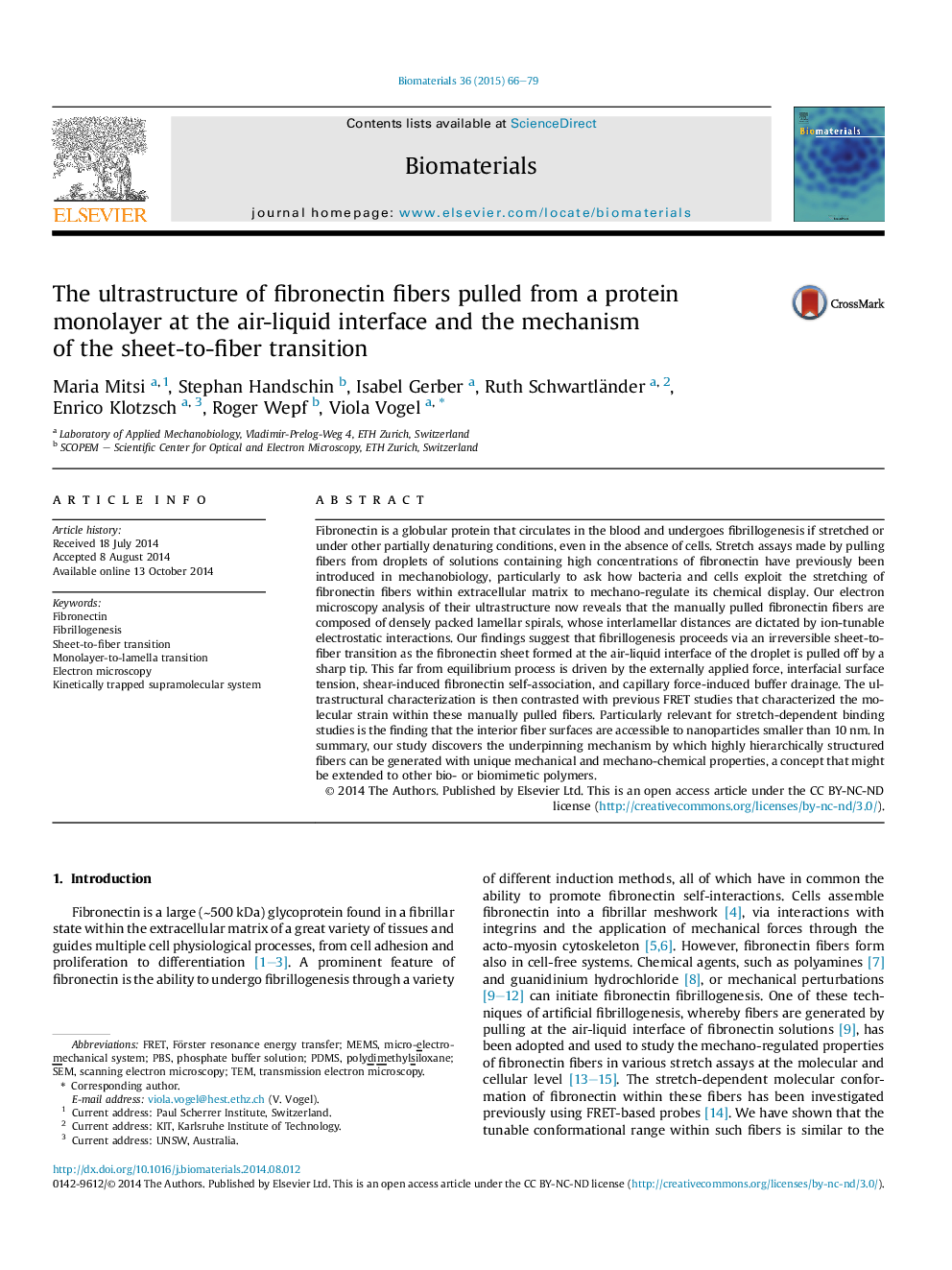| کد مقاله | کد نشریه | سال انتشار | مقاله انگلیسی | نسخه تمام متن |
|---|---|---|---|---|
| 6486510 | 440 | 2015 | 14 صفحه PDF | دانلود رایگان |
عنوان انگلیسی مقاله ISI
The ultrastructure of fibronectin fibers pulled from a protein monolayer at the air-liquid interface and the mechanism of the sheet-to-fiber transition
ترجمه فارسی عنوان
فراساختار فیبرنرکتین از یک پروتئین یکنواخت در رابط مایع هوا و مکانیزم انتقال ورق به فیبر
دانلود مقاله + سفارش ترجمه
دانلود مقاله ISI انگلیسی
رایگان برای ایرانیان
کلمات کلیدی
PBSPDMSMEMS - فناوری میکرو الکترومکانیکیFörster resonance energy transfer - انتقال انرژی تابشی ForsterFRET - انتقال انرژی رزونانسی فورسترTem - این استMicro-electro-mechanical system - سیستم میکرو الکترومکانیکیFibronectin - فیبرونکتینfibrillogenesis - فیبریلژنتیکphosphate buffer solution - محلول بافر فسفاتSEM - مدل معادلات ساختاری / میکروسکوپ الکترونی روبشیElectron microscopy - میکروسکوپ الکترونیScanning electron microscopy - میکروسکوپ الکترونی روبشیTransmission electron microscopy - میکروسکوپ الکترونی عبوریPolydimethylsiloxane - پلیمتیلسیلوکسان
موضوعات مرتبط
مهندسی و علوم پایه
مهندسی شیمی
بیو مهندسی (مهندسی زیستی)
چکیده انگلیسی
Fibronectin is a globular protein that circulates in the blood and undergoes fibrillogenesis if stretched or under other partially denaturing conditions, even in the absence of cells. Stretch assays made by pulling fibers from droplets of solutions containing high concentrations of fibronectin have previously been introduced in mechanobiology, particularly to ask how bacteria and cells exploit the stretching of fibronectin fibers within extracellular matrix to mechano-regulate its chemical display. Our electron microscopy analysis of their ultrastructure now reveals that the manually pulled fibronectin fibers are composed of densely packed lamellar spirals, whose interlamellar distances are dictated by ion-tunable electrostatic interactions. Our findings suggest that fibrillogenesis proceeds via an irreversible sheet-to-fiber transition as the fibronectin sheet formed at the air-liquid interface of the droplet is pulled off by a sharp tip. This far from equilibrium process is driven by the externally applied force, interfacial surface tension, shear-induced fibronectin self-association, and capillary force-induced buffer drainage. The ultrastructural characterization is then contrasted with previous FRET studies that characterized the molecular strain within these manually pulled fibers. Particularly relevant for stretch-dependent binding studies is the finding that the interior fiber surfaces are accessible to nanoparticles smaller than 10Â nm. In summary, our study discovers the underpinning mechanism by which highly hierarchically structured fibers can be generated with unique mechanical and mechano-chemical properties, a concept that might be extended to other bio- or biomimetic polymers.
ناشر
Database: Elsevier - ScienceDirect (ساینس دایرکت)
Journal: Biomaterials - Volume 36, January 2015, Pages 66-79
Journal: Biomaterials - Volume 36, January 2015, Pages 66-79
نویسندگان
Maria Mitsi, Stephan Handschin, Isabel Gerber, Ruth Schwartländer, Enrico Klotzsch, Roger Wepf, Viola Vogel,
